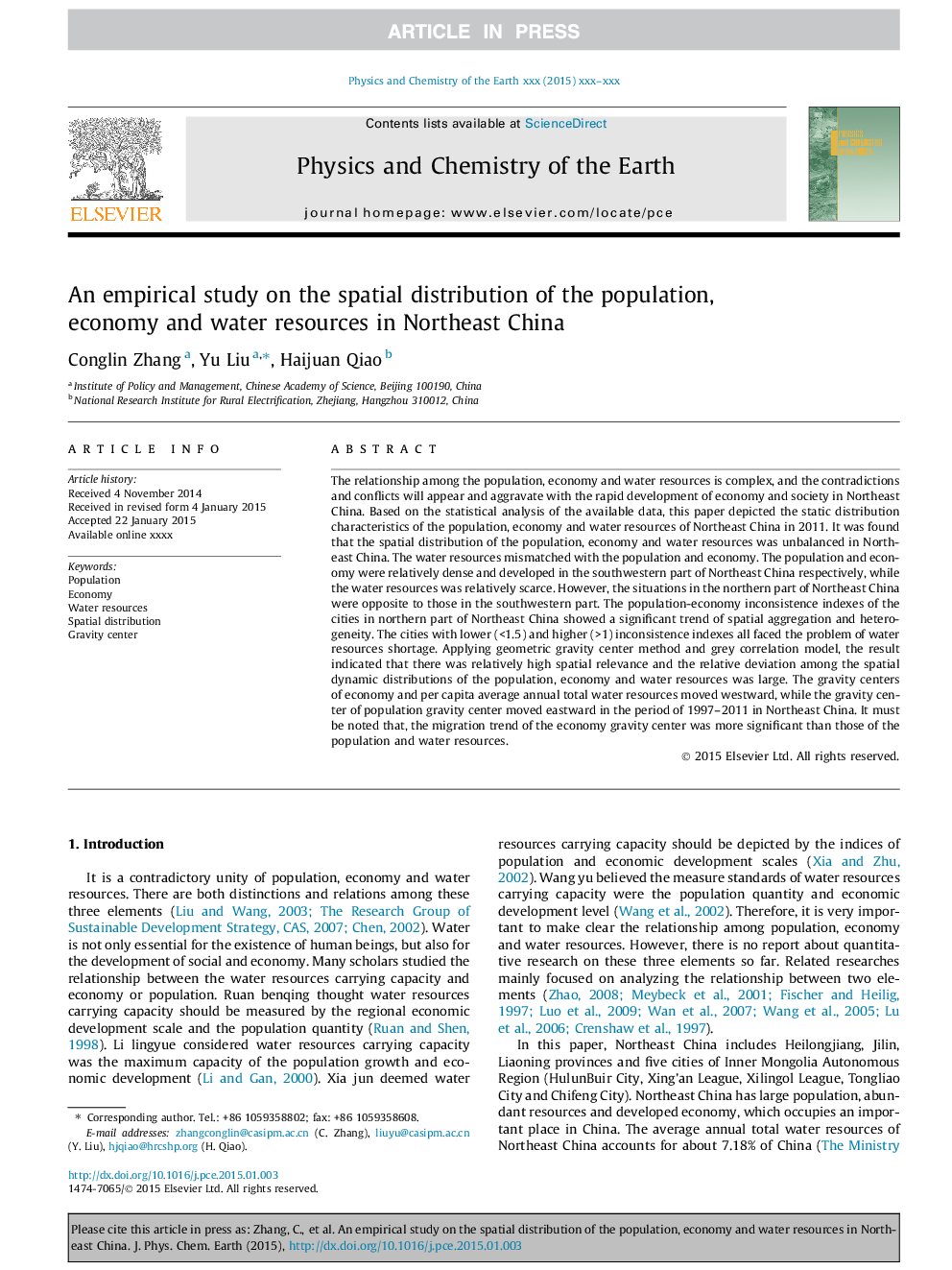| Article ID | Journal | Published Year | Pages | File Type |
|---|---|---|---|---|
| 6441951 | Physics and Chemistry of the Earth, Parts A/B/C | 2015 | 7 Pages |
Abstract
The relationship among the population, economy and water resources is complex, and the contradictions and conflicts will appear and aggravate with the rapid development of economy and society in Northeast China. Based on the statistical analysis of the available data, this paper depicted the static distribution characteristics of the population, economy and water resources of Northeast China in 2011. It was found that the spatial distribution of the population, economy and water resources was unbalanced in Northeast China. The water resources mismatched with the population and economy. The population and economy were relatively dense and developed in the southwestern part of Northeast China respectively, while the water resources was relatively scarce. However, the situations in the northern part of Northeast China were opposite to those in the southwestern part. The population-economy inconsistence indexes of the cities in northern part of Northeast China showed a significant trend of spatial aggregation and heterogeneity. The cities with lower (<1.5) and higher (>1) inconsistence indexes all faced the problem of water resources shortage. Applying geometric gravity center method and grey correlation model, the result indicated that there was relatively high spatial relevance and the relative deviation among the spatial dynamic distributions of the population, economy and water resources was large. The gravity centers of economy and per capita average annual total water resources moved westward, while the gravity center of population gravity center moved eastward in the period of 1997-2011 in Northeast China. It must be noted that, the migration trend of the economy gravity center was more significant than those of the population and water resources.
Related Topics
Physical Sciences and Engineering
Earth and Planetary Sciences
Geochemistry and Petrology
Authors
Conglin Zhang, Yu Liu, Haijuan Qiao,
